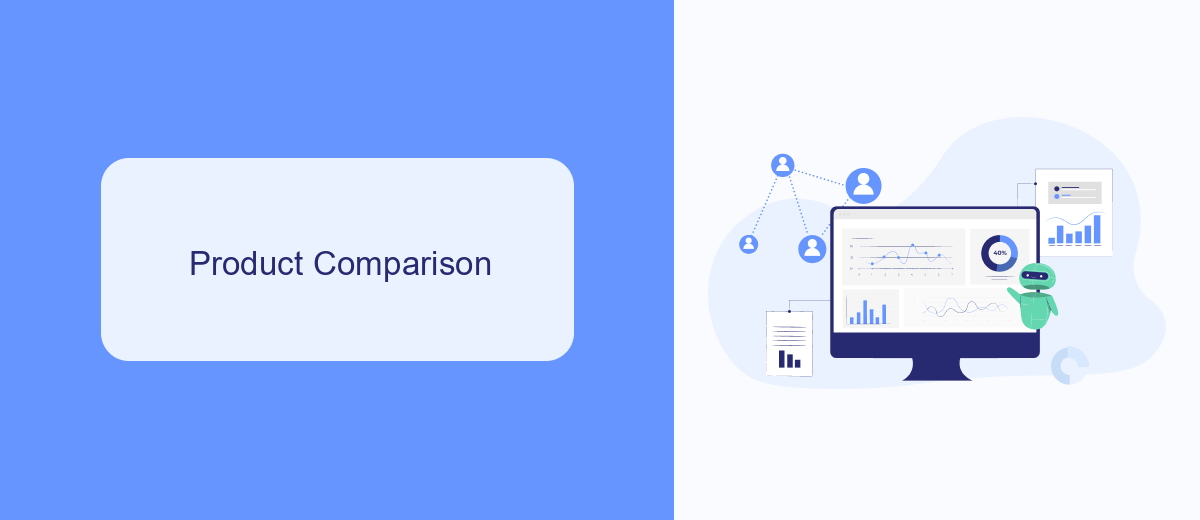In the rapidly evolving landscape of data integration and management, choosing the right platform is crucial for business success. Informatica and MuleSoft are two leading contenders, each offering unique features and capabilities. This article delves into a detailed comparison of Informatica and MuleSoft, helping you understand their strengths and weaknesses to make an informed decision for your organization's needs.
Introduction
In today's rapidly evolving technological landscape, businesses are increasingly relying on robust integration platforms to streamline their operations and enhance connectivity between disparate systems. Two prominent players in this field are Informatica and MuleSoft, each offering a suite of tools designed to facilitate seamless data integration and management.
- Informatica: Known for its comprehensive data integration capabilities, Informatica provides powerful ETL (Extract, Transform, Load) tools and cloud-based solutions.
- MuleSoft: MuleSoft's Anypoint Platform is renowned for its API-led connectivity approach, enabling businesses to design, build, and manage APIs with ease.
Choosing the right integration platform can significantly impact your business's efficiency and agility. While both Informatica and MuleSoft offer unique advantages, it's essential to evaluate your specific needs and objectives. Tools like SaveMyLeads can further simplify the integration process by automating data transfer between various applications and services, ensuring that your business operations remain smooth and uninterrupted.
Product Comparison

When comparing Informatica and MuleSoft, both platforms offer robust solutions for data integration and API management. Informatica excels in data integration, providing a comprehensive suite of tools for data quality, data governance, and master data management. Its user-friendly interface and powerful ETL capabilities make it a preferred choice for enterprises looking to streamline their data workflows and ensure data accuracy across various systems.
On the other hand, MuleSoft is renowned for its API-led connectivity approach, enabling businesses to connect applications, data, and devices seamlessly. MuleSoft's Anypoint Platform offers extensive API management features, making it ideal for organizations focusing on building and managing APIs. For those looking to simplify the integration process further, services like SaveMyLeads can be highly beneficial. SaveMyLeads automates data transfer between various applications, reducing manual effort and ensuring real-time data synchronization. This can complement the capabilities of both Informatica and MuleSoft, offering an additional layer of efficiency in integration projects.
Key Features and Benefits

When comparing Informatica and MuleSoft, it's essential to understand the key features and benefits each platform offers. Both are prominent players in the integration space, but they cater to different needs and use cases.
- Data Integration: Informatica excels in data integration with robust ETL capabilities, making it ideal for complex data transformations and migrations.
- API Management: MuleSoft specializes in API management, allowing businesses to create, manage, and secure APIs effectively.
- Cloud Integration: Both platforms offer strong cloud integration features, but MuleSoft's Anypoint Platform provides a more comprehensive solution for hybrid and multi-cloud environments.
- Ease of Use: Informatica offers a user-friendly interface with drag-and-drop functionality, while MuleSoft requires more technical expertise but provides greater flexibility for custom integrations.
- Automation: Tools like SaveMyLeads can complement both platforms by automating lead and data integration processes, enhancing overall efficiency.
In summary, Informatica is a powerhouse for data-centric integration tasks, while MuleSoft shines in API management and cloud integration. Depending on your organization's specific needs, either platform can provide substantial benefits, especially when paired with automation tools like SaveMyLeads to streamline processes further.
Use Cases

Informatica and MuleSoft are two leading integration platforms that cater to different business needs. Informatica specializes in data integration, providing robust data management and analytics solutions. MuleSoft, on the other hand, focuses on application integration, enabling seamless connectivity between various software applications.
Both platforms offer unique use cases that can benefit organizations in different ways. Informatica is ideal for enterprises that require extensive data processing and transformation capabilities. MuleSoft excels in scenarios where real-time data exchange and API management are critical.
- Data warehousing and ETL processes with Informatica.
- API-led connectivity and microservices architecture with MuleSoft.
- Automated lead management and CRM integration using services like SaveMyLeads.
- Data quality and governance solutions with Informatica.
- Real-time data synchronization and application integration with MuleSoft.
Choosing between Informatica and MuleSoft depends on the specific requirements of your business. While Informatica is suited for data-centric tasks, MuleSoft is the go-to for application-centric integrations. Additionally, services like SaveMyLeads can complement these platforms by automating lead data transfer, enhancing overall efficiency.
Conclusion
In conclusion, both Informatica and MuleSoft offer robust solutions for data integration and management, each with its unique strengths and capabilities. Informatica excels in its comprehensive suite of data integration tools and advanced data governance features, making it a preferred choice for enterprises with complex data landscapes. On the other hand, MuleSoft stands out with its API-led connectivity approach, providing seamless integration across various systems and applications, which is particularly beneficial for businesses aiming for agility and scalability in their digital transformation efforts.
When choosing between Informatica and MuleSoft, it is crucial to consider the specific needs and goals of your organization. For those looking to streamline and automate their integration processes, services like SaveMyLeads can be invaluable. SaveMyLeads simplifies the integration setup, allowing businesses to connect their applications effortlessly and focus on strategic initiatives. Ultimately, the right choice will depend on your organization's integration requirements, existing infrastructure, and long-term objectives.
- Automate the work with leads from the Facebook advertising account
- Empower with integrations and instant transfer of leads
- Don't spend money on developers or integrators
- Save time by automating routine tasks
FAQ
What are the primary differences between Informatica and MuleSoft?
Which platform is better for real-time data integration?
How do the licensing models differ between Informatica and MuleSoft?
Can I use third-party services to automate and set up integrations for these platforms?
Which platform offers better support for cloud-based integrations?
Use the SaveMyLeads service to improve the speed and quality of your Facebook lead processing. You do not need to regularly check the advertising account and download the CSV file. Get leads quickly and in a convenient format. Using the SML online connector, you can set up automatic transfer of leads from Facebook to various services: CRM systems, instant messengers, task managers, email services, etc. Automate the data transfer process, save time and improve customer service.

